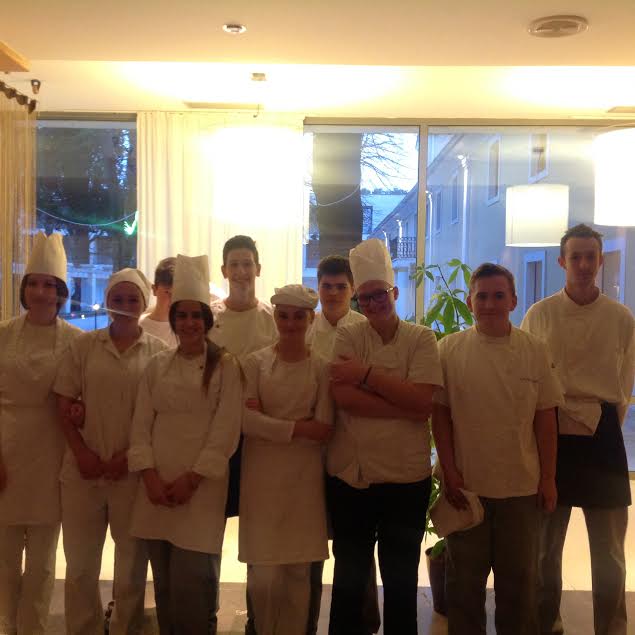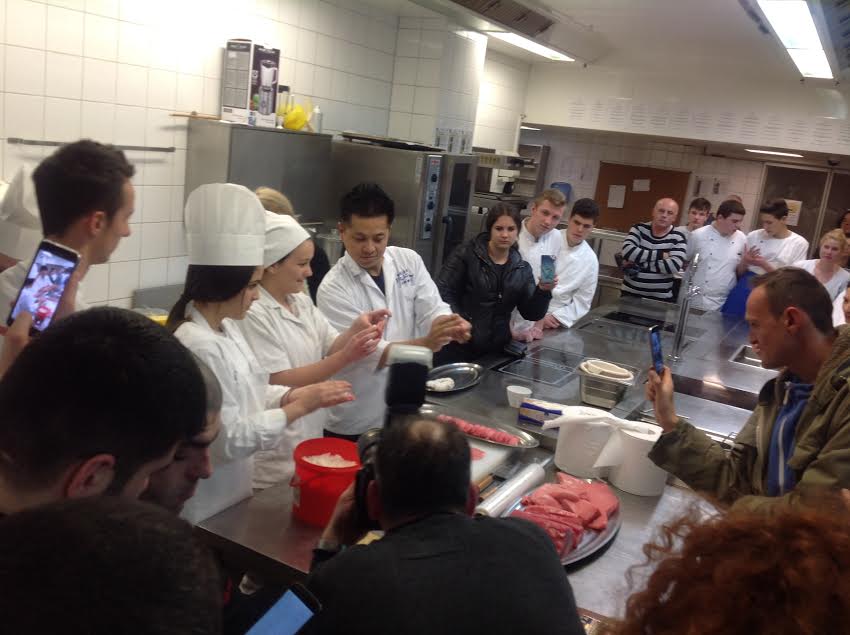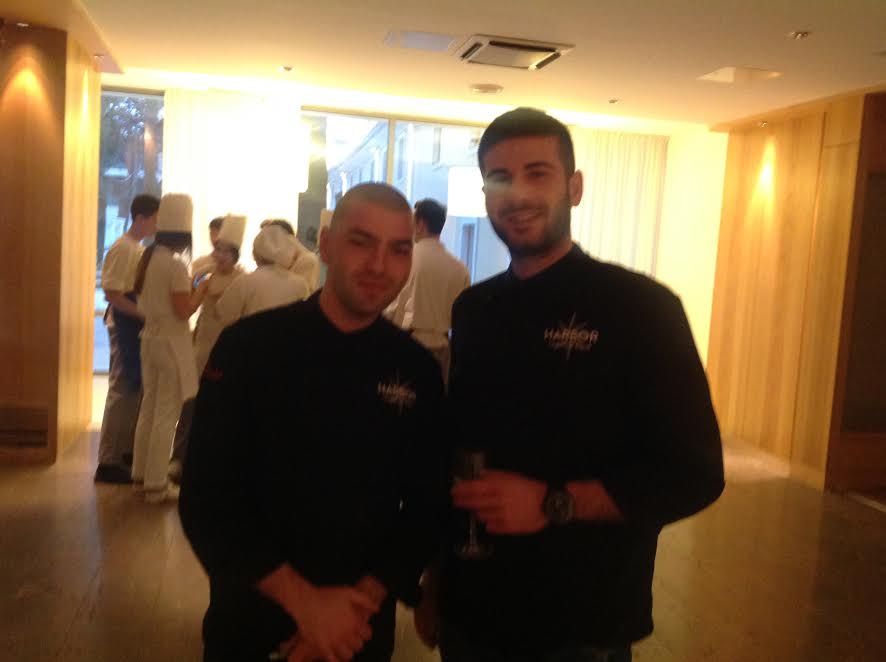Zadar recently held its third Tuna, Sushi and Wine Festival. Lovely guest post for TCN by Jo Ahearne MW on February 11, 2017, who took part in the sushi workshop.
Each new year, the first auction at Tokyo’s Tsukiji fish market creates a buzz and provides publicity for the highest bidder. This year the highest priced tuna was sold for 72 million yen or about 4.5 million Kuna for a 210kg Pacific bluefin tuna. That was half the record of 155 million yen set in 2013 but well above the record set last year of 14 million yen.
With a mouthful of tuna weighing just under 30g, it works out to about 650 Kuna a slice. At that rate I must have consumed about 15,000 Kuna’s worth at the Zadar Sushi Festival last week! Luckily the Zadar farmed Adriatic Bluefin tuna is a little bit cheaper than the publicity-grabbing Tokyo fish market…..
The Zadar Sushi Festival was set up in 2015 as a way of giving a focus to the important economic activity of tuna farming in the region. It celebrates the ‘diamond of the sea’, bringing famous chefs from Japan to give a glimpse into the art that is sushi. This year three chefs came to Zadar. TV and restaurant chef, Mr Nakatsuji from Japan, as part of the festival running workshops and preparing some interesting truffle and tuna combinations. Taro Arai, Japanese born chef from the American restaurant Mikuni and Seigo Nakamura, the man behind the Aburi restaurants in Canada as part of the collaboration with ToroCro Maguro tuna and Bastion Hotel.

The tuna are only allowed to be caught in the months of May and June with fish smaller than 9kg being returned to the sea. They are then fattened on a diet of small fish until they reach the size that is most sought after by the Japanese restaurants – 80kg. Over 15kg of fish are needed for one tuna to gain 1 kg of weight. Many conservationists question the validity of farmed tuna citing concerns over sea pollution and the strain on smaller fish stock. Bluefin tuna is currently on the red list of endangered fish. With such a high price on their heads the tuna population is dwindling each year. The fish can grow to 450kg, swim over 70km per hour and cross entire oceans whereas in the farmed pens of 50m diameter their lives are much more restricted. And they are grown to a much smaller size.
The Japanese eat about 40,000 tonnes of tuna a year—80% of the global catch – with growing demand from elsewhere adding to the pressure. Pacific bluefin stocks are down by 97% from their peak in the early 1960s when there was no demand for this king of fish. In some places, fishing is three times the sustainable level so the importance of farming, lowering and effective policing of quotas and the work on successfully growing tuna from the larvae stage is important for the long term health of the Pacific, Atlantic and Adriatic tuna.
Sushi was invented thousands of years ago in Japan as a way to preserve raw fish. It was pressed between rice and salt by a heavy stone for a few weeks and then covered with a lighter material like seaweed until the fish had fermented. In the 18th century Tokyo chef, Yohei Hanaya, by-passed the fermentation stage and modern-day sushi was born. Two styles were developed – kansai (Osaka) and edo (Tokyo). When sushi was exported to America yet another style was created – Californian. However, this is not eaten in Japan where purity is all and the likes of cream cheese, avocado or ham has no place in the sushi kitchen.

Sushi is considered an art because the appearance is as important as the taste. And for the uninitiated or novice western consumer there is much to learn in the art of eating it.
Sushi should be made into bit-sized pieces and never bitten in two. You can eat sushi with your hands or with chopsticks. Both are equally acceptable. Turn the sushi onto the side to pick it up and dip the fish gently into soy sauce. Never dip the rice into the sauce as it absorbs too much ruining the balance of the dish. The dollop of wasabi put onto the sushi rice by the chef should be enough to give a little kick. No more is required. The pickled ginger should be eaten after the sushi to cleanse the palate. Basically, I’ve been doing it all wrong since the first day I ate sushi.
Of course, like any cuisine, there are levels of expertise but each sushi chef must learn how to cut the fish before even being allowed to prepare the nigiri (rice balls) and combine it with a slice of sashimi. The chefs undergo an intensive three month course to gain the Level 5 qualification and then a further two years in a sushi kitchen to gain the Level 4. It can take a decade to reach the highest level.
The amount of rice is key to balance the flavour of the fish and not overpower it. The pressure exerted onto the rice is also important. To much pressure results in hard nigiri and too little leaves grains of rice cascading from the ball. Believe me, it’s a lot harder than it looks.
During the sushi workshop with Masterchef Mr Nakatsuji he patiently explained and encouraged a selection of students and chefs from the Zadar region. The catering students I talked to were filled with excitement by the experience and despite the fact that only a few of them had ever tasted sushi before they were all positive that it would taste wonderful. ‘Fresh fish. What’s not to like?’

(Amez and Valentin from Harbor)
Amez Mezkić and Valentin Perozi from the Harbor Cookhouse in Zadar were looking forward to trying the technique. They were unsure how Croatian customers would react to sushi appearing on a non-Japanese restaurant’s menu but keen to try to see the reaction. Speaking to Damir Tomljanović about the place of raw food in his new position at Bevanda in Opatija was interesting as they are planning a whole raw food bar both in the restaurant and the beach bar. Featuring oysters from both Ston and France, sushi, carpaccio and a host of other raw delicacies.
Viewing the queues at the sushi stands at the Sushi Festival Gala diner I think the clientele are more than ready to embrace the art of sushi in Croatia.









